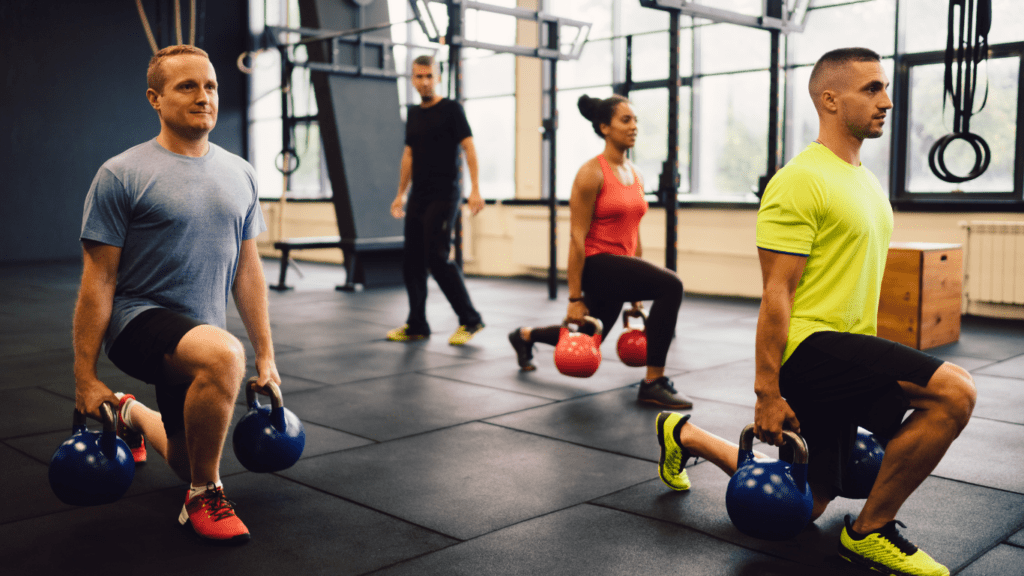I’ve hit plateaus in my fitness journey more times than I can count, and it’s one of the most frustrating feelings. No matter how hard I pushed, my progress would stall, leaving me wondering what I was doing wrong. That’s when I discovered the power of cross-training—not just as a way to mix things up, but as a game-changer for breaking through those stubborn barriers.
Understanding Cross-Training
Cross-training integrates multiple forms of exercise to improve overall fitness and adaptability. It balances different physical skills and reduces the overuse of specific muscle groups.
What Is Cross-Training?
Cross-training combines exercises from different disciplines to target varied muscle groups and energy systems. For example, a runner might add cycling or swimming to enhance cardiovascular endurance and reduce joint stress. This strategy alternates activities to diversify the workload on the body while preventing repetitive strain.
Cross-training isn’t limited to athletes in specific sports—it’s beneficial across fitness levels. It includes strength training, flexibility exercises, aerobic activities, and sport-specific drills, helping create a comprehensive fitness routine.
Benefits of Cross-Training for Athletes
- Preventing injuries: Alternating activities reduces repetitive strain. For example, combining strength training with low-impact exercises like swimming minimizes joint wear.
- Enhancing performance: Complementary workouts improve overall athletic ability. A basketball player might run sprints off the court to build explosiveness.
- Breaking plateaus: Diversifying challenges improves muscle and skill development. Adding yoga to an endurance routine aids recovery while improving flexibility.
- Boosting motivation: Trying new activities keeps workouts engaging. Switching between weightlifting and martial arts can prevent boredom.
Cross-training reshapes fitness routines by introducing variety, ultimately making workouts more effective and enjoyable.
Breaking Through Plateaus with Cross-Training
Cross-training offers a structured approach to overcome performance stagnation. By introducing varied exercises, it challenges the body in new ways, promoting continuous improvement.
Identifying Performance Plateaus
Performance plateaus occur when progress in strength, endurance, or skill halts despite consistent efforts. These moments often signal the body’s adaptation to repetitive routines, diminishing returns from the same exercises. For instance, runners may notice stagnant pace improvements, or weightlifters may face difficulty increasing loads. Monitoring steady metrics, like weekly time trials or lifting progress, reveals plateaus early. Recognizing these signs allows quicker intervention to restore progress.
How Cross-Training Stimulates Growth
Cross-training disrupts monotony and reactivates progress through unfamiliar challenges. For example, athletes relying on endurance can develop power by incorporating plyometrics, while lifters can improve cardiovascular capacity with activities like swimming or cycling. These variations target underutilized muscle groups and energy systems, improving strength, endurance, and mobility. Additionally, diversifying workouts reduces cumulative strain on overused areas, allowing recovery and long-term growth. This multifaceted approach energizes routines while fostering noticeable, sustainable improvements.
Improving Athletic Versatility

Cross-training fosters versatility by engaging multiple muscle groups and energy systems. It equips athletes to adapt to various challenges, broadening their skill sets and improving overall performance.
Building Well-Rounded Fitness
Incorporating exercises from diverse disciplines strengthens different physical capacities. For instance, pairing yoga with strength training enhances flexibility while building muscular power. Including:
- swimming
- cycling
- running
develops cardiovascular endurance, complementing agility-focused activities like plyometrics or dance. Each new workout recruits unique muscle groups, creates balance, and prevents over-reliance on a few. By diversifying my routine, I built a fitness foundation that supports agility, strength, and endurance equally.
Enhancing Injury Prevention
Cross-training reduces overuse injuries caused by repetitive motion. By alternating exercise types, like replacing high-impact running sessions with low-impact swimming, I decreased strain on joints and muscles. Strengthening opposing muscle groups, such as working on both pushing and pulling movements, also stabilized imbalances that could otherwise lead to injuries. Engaging varied motions across activities ensures no single area is overstressed. This proactive approach kept me healthier even through intensive training.
Designing an Effective Cross-Training Plan
Creating a solid cross-training plan maximizes progress and ensures workouts remain engaging and goal-oriented. A well-structured approach balances diverse activities while complementing primary fitness objectives.
Selecting Activities for Your Goals
I choose activities that align with and support my specific fitness goals. For example, when aiming to build endurance, I integrate swimming or cycling into my routine as these improve cardiovascular capacity. To boost strength, I might pair resistance training with functional bodyweight exercises. For enhancing flexibility and balance, I incorporate practices like yoga or Pilates. Selecting complementary activities ensures each workout addresses different muscle groups and energy systems, promoting well-rounded development.
Cross-training should also target weak areas. If I notice limited flexibility or core instability, I include exercises to strengthen those deficiencies, enhancing overall performance. By focusing on areas of improvement, I avoid plateaus and promote long-term growth.
Balancing Cross-Training with Primary Workouts
I maintain balance by prioritizing my main training discipline while using cross-training as a supplemental tool. For example, if running is my primary focus, I dedicate most sessions to running-specific workouts while allocating 1–2 days per week to cross-training. These secondary sessions prevent overtraining and offer recovery benefits without detracting from primary performance goals.
Intensity management is key. During peak training phases, I schedule lower-intensity cross-training, such as swimming or yoga, to facilitate active recovery. Conversely, in off-season periods, I use higher-intensity cross-training, like HIIT or plyometrics, to develop transferable strength and endurance. This balanced approach enhances variety without compromising progress in my primary sport.



 Injury Prevention & Recovery Specialist
Injury Prevention & Recovery Specialist
